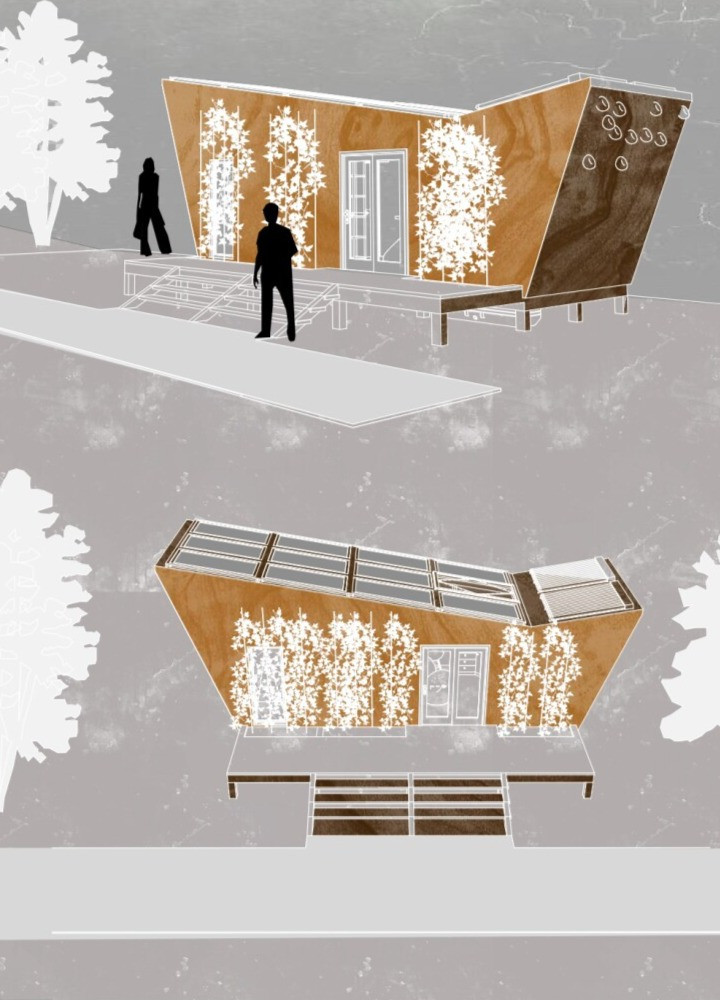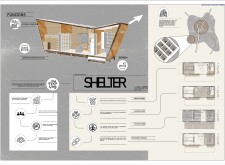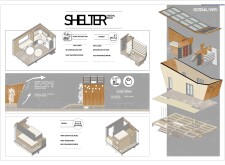5 key facts about this project
## Project Overview
The "SHELTER" design addresses critical housing affordability and functionality challenges within urban environments, particularly pertinent to regions like Hungary. It promotes a comprehensive strategy for creating living spaces that enhance mental well-being while responding to the pressures of modern urban life. By emphasizing a balance between private and communal areas, the project supports both individual retreat and social engagement, integral components of a supportive living environment.
### Spatial Organization
The layout features a compact arrangement of functional zones tailored to maximize efficiency and adaptability. Private rooms ensure individual privacy, fostering mental tranquility, while the communal living room encourages social interaction. The kitchen and dining area serve dual roles, emphasizing utility in shared spaces, and the inclusion of a bathroom provides essential comfort. A bedroom working station enhances productivity without compromising rest, showcasing a flexible approach to everyday living.
### Material Selection and Sustainability
Sustainable material choices are at the forefront of the design, emphasizing both environmental responsibility and user comfort. Structural framing and outer cladding predominantly utilize wood, which aids in energy efficiency and promotes warmth. KingSpan paneling offers reusable walls that enhance thermal insulation, while integrated glass elements optimize natural light, reducing the dependency on artificial illumination. The project also incorporates green wall systems that enhance air quality and support local biodiversity alongside the use of recycled materials, minimizing waste throughout the construction process.
Passive design strategies further reinforce sustainability goals by incorporating systems for rainwater and greywater collection and integrating solar energy collection panels, optimizing energy use while minimizing environmental impact. Additionally, careful layout considerations improve natural ventilation, supporting indoor comfort without mechanical interventions.





















































